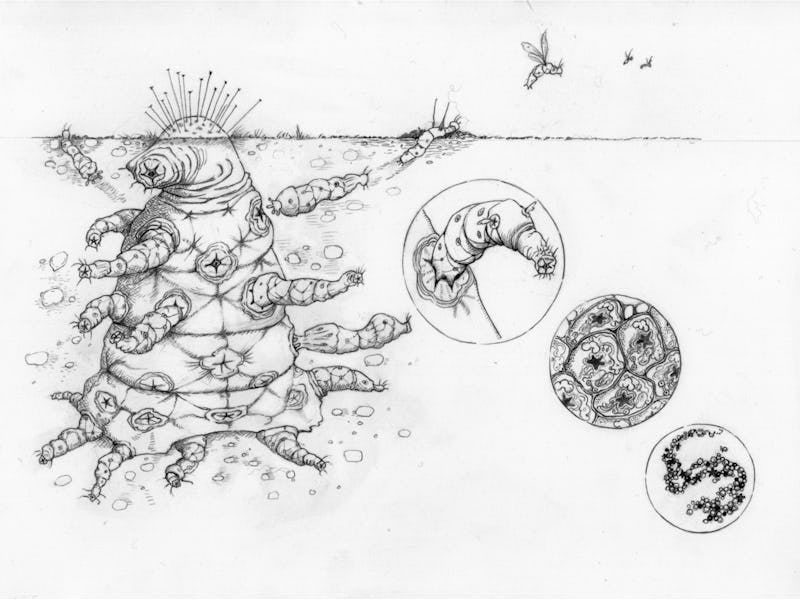Most of our ideas about what aliens might look like are frankly pretty absurd, despite having no concrete evidence on a) if there’s anything actually out there, and b) what these hypothetical organisms would look actually look like, even if they did indeed exist. Take the aliens from Signs for example — sure, they look like every other alien in sci-fi, but they’re also fatally allergic to water? Why the hell would they come to conquer a planet full of it in the first place?
A new study from the University of Oxford sheds some light on what extraterrestrial life might be like, and unsurprisingly, it could be more us than the M. Night Shyamalan interpretation assumed. The researchers argue that Darwin’s idea of natural selection might be useful in understanding alien life forms — basically, they suggest “survival of the fittest” might apply to aliens as well. Their findings have been published in the International Journal of Astrobiology.
“In our paper, we offer an alternative approach, which is to use evolutionary theory to make predictions that are independent of Earth’s details,” O’ne of the study’s co-authors Sam Levin, a researcher in Oxford’s Department of Zoology, says in a statement. “This is a useful approach, because theoretical predictions will apply to aliens that are silicon based, do not have DNA, and breathe nitrogen, for example.”
The researchers also suggest extraterrestrial life becomes increasingly complex over time, just as species on Earth has become more advanced organisms as a result of extreme events. The evolution of multicellular life roughly 600 million years ago is just one such example of one of these major shifts.
“By predicting that aliens undergone major transitions, which is how complexity has arisen in species on earth, we can say that there is a level of predictability to evolution that would cause them to look like us,” Levin says. “Like humans, we predict that they are made-up of a hierarchy of entities, which all cooperate to produce an alien. At each level of the organism there will be mechanisms in place to eliminate conflict, maintain cooperation, and keep the organism functioning. We can even offer some examples of what these mechanisms will be.”
Obviously, the main drawback of this study is that we’ve never found extraterrestrial life, so any ideas about what they look like or how they behave are extremely speculative. After all, some scientists think the majority of intelligent alien life might not be biological at all — that civilizations on other worlds might have be so advanced they’ve already built robots that can basically just hang out in space.
“The majority of the intelligence in the universe is probably synthetic intelligence,” SETI senior astronomer Seth Shostak told Inverse back in October. “So now if you ask where should we point antennas to find that, it becomes a very hard problem. It’s pretty easy to say ‘[Intelligent life] is gonna be biological, living on some world sort of like Earth. But it could be machines just hanging out in space.”
While this new research is certainly exciting, it’s probably best not to get too excited. Or you can go ahead and totally freak out — aliens are pretty fun to think about, and I won’t tell you how to live your life.
Make your inbox weirder: Get emails from Inverse.
If you liked this article, check out this video on an expert look at xenomorph alien biology.
